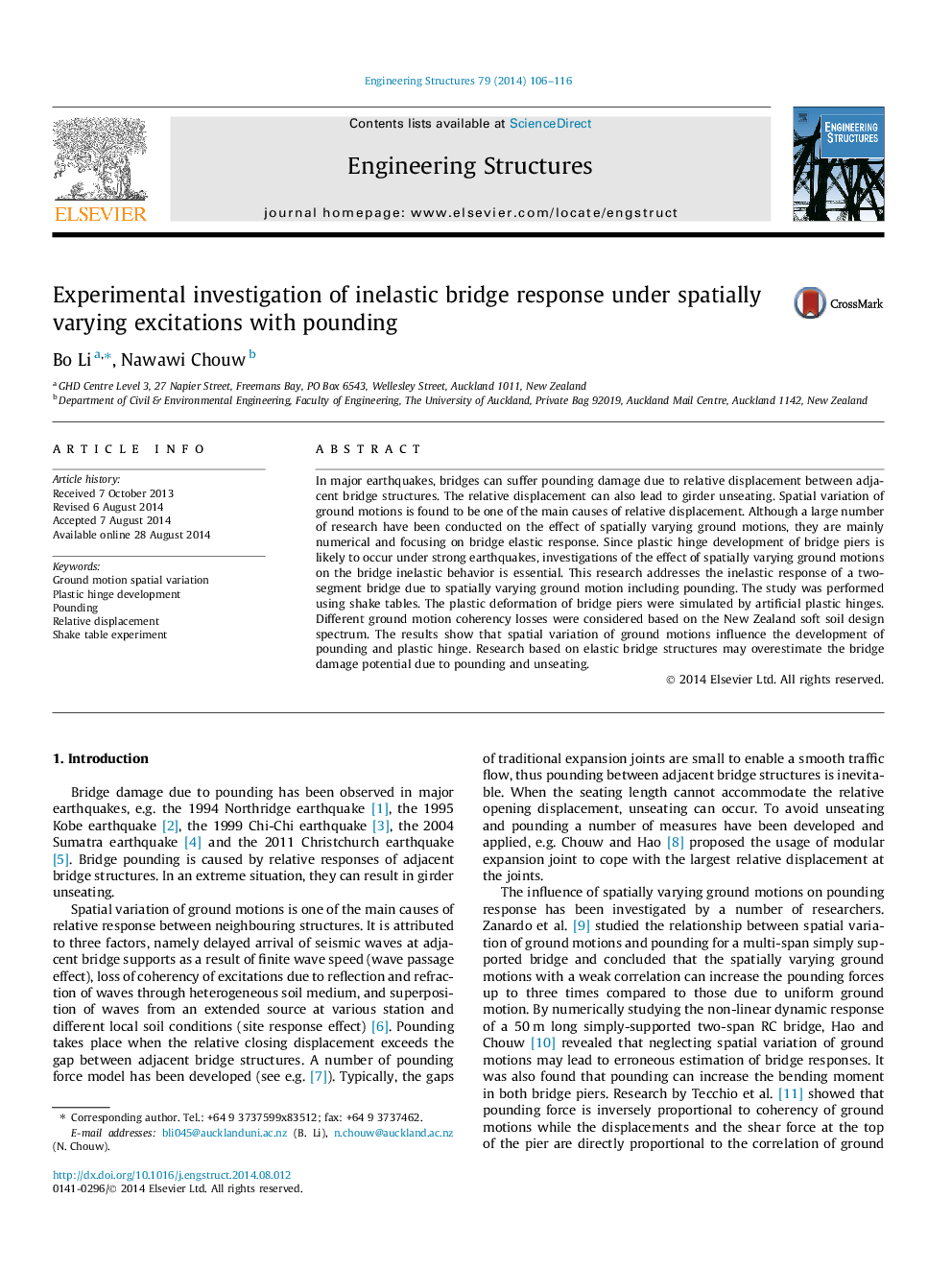| Article ID | Journal | Published Year | Pages | File Type |
|---|---|---|---|---|
| 266499 | Engineering Structures | 2014 | 11 Pages |
•Spatially varying ground motion can influence the plastic hinge development.•With pounding, the number of plastic hinge rotation may increase.•With plastic hinge development, pounding can contribute to girder unseating.•Plastic hinge development can contribute to reducing the maximum response.•Assuming elastic bridge response may overestimate the unseating potential.
In major earthquakes, bridges can suffer pounding damage due to relative displacement between adjacent bridge structures. The relative displacement can also lead to girder unseating. Spatial variation of ground motions is found to be one of the main causes of relative displacement. Although a large number of research have been conducted on the effect of spatially varying ground motions, they are mainly numerical and focusing on bridge elastic response. Since plastic hinge development of bridge piers is likely to occur under strong earthquakes, investigations of the effect of spatially varying ground motions on the bridge inelastic behavior is essential. This research addresses the inelastic response of a two-segment bridge due to spatially varying ground motion including pounding. The study was performed using shake tables. The plastic deformation of bridge piers were simulated by artificial plastic hinges. Different ground motion coherency losses were considered based on the New Zealand soft soil design spectrum. The results show that spatial variation of ground motions influence the development of pounding and plastic hinge. Research based on elastic bridge structures may overestimate the bridge damage potential due to pounding and unseating.
